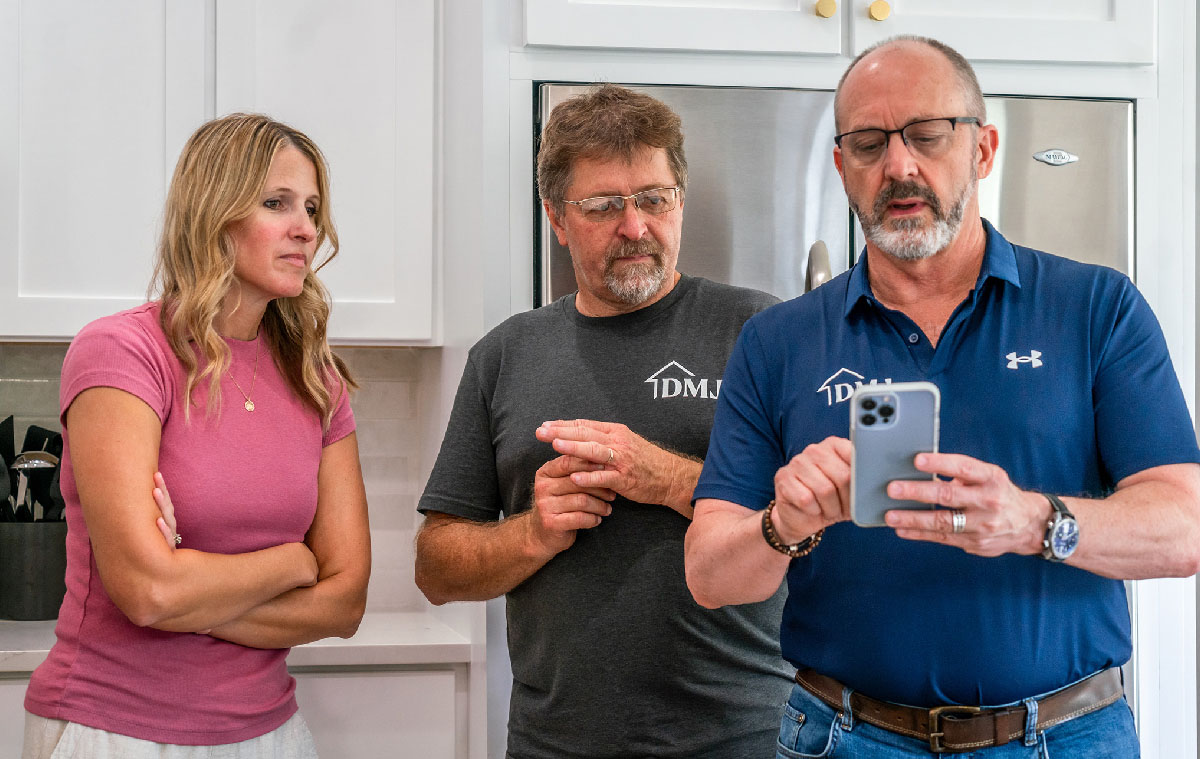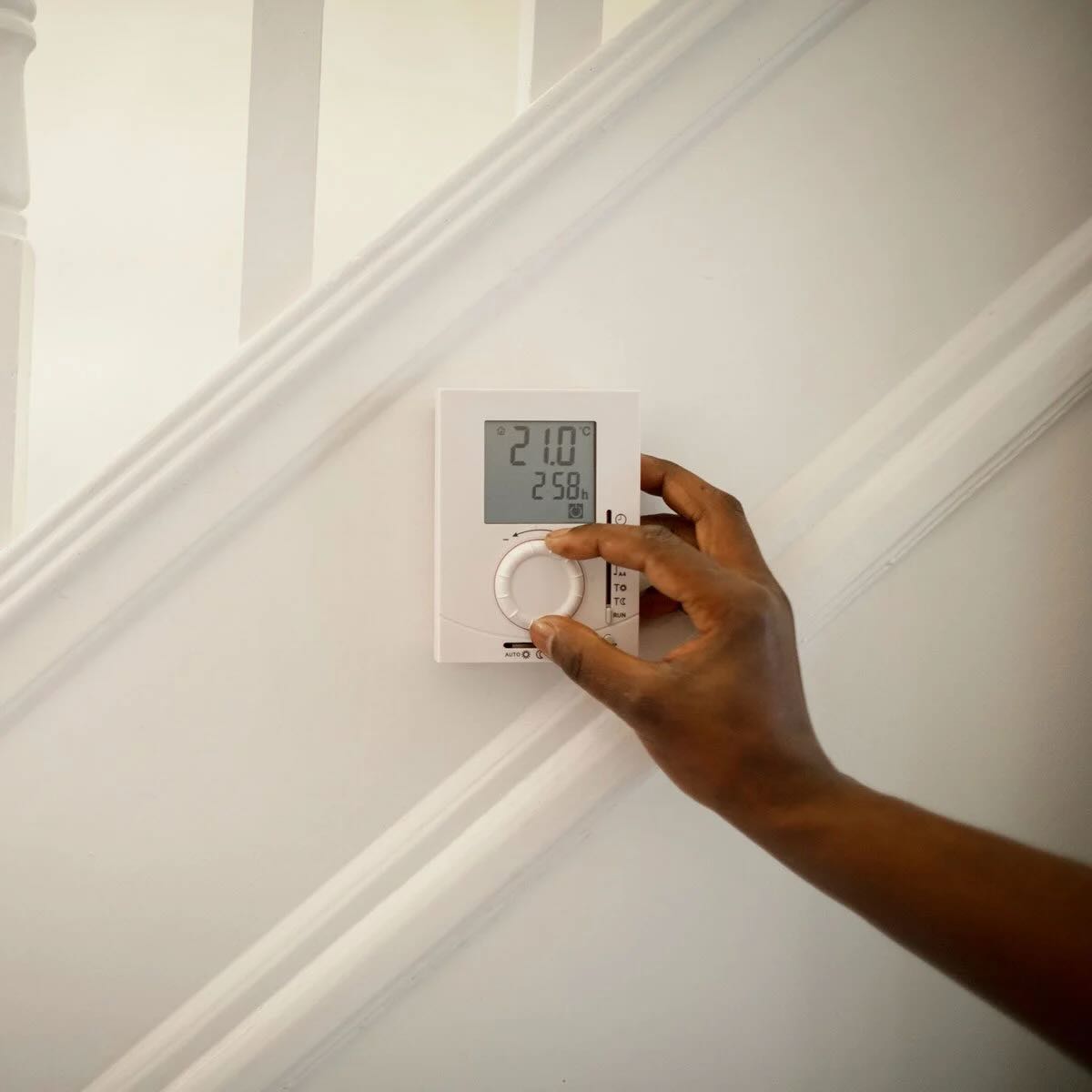Home>Home Maintenance>What Should Be In A Home Repair Contract


Home Maintenance
What Should Be In A Home Repair Contract
Modified: March 6, 2024
Ensure a thorough and legally binding agreement for your home-maintenance needs. Discover what essential elements should be included in a comprehensive home repair contract.
(Many of the links in this article redirect to a specific reviewed product. Your purchase of these products through affiliate links helps to generate commission for Storables.com, at no extra cost. Learn more)
Introduction
When it comes to home repairs and renovations, having a clear and comprehensive contract is essential. A home repair contract is a legally binding agreement between a homeowner and a contractor, outlining the terms and conditions of the project. This document protects both parties by setting expectations and preventing any misunderstandings that may arise during the course of the work.
Whether you’re hiring a professional contractor or doing the repairs yourself, having a written contract ensures that everyone is on the same page. It provides a clear roadmap for the project, detailing the scope of work, materials and equipment required, timelines, payment terms, warranties, and more.
In this article, we will provide an overview of what should be included in a home repair contract. By understanding the key components of a well-written contract, you can safeguard your interests and ensure the successful completion of your home maintenance project.
Key Takeaways:
- A home repair contract is a crucial tool for homeowners and contractors, outlining project details and protecting both parties’ interests. It ensures clarity, fairness, and accountability throughout the project.
- By including key elements such as parties involved, scope of work, payment terms, and dispute resolution, a well-drafted home repair contract minimizes misunderstandings and lays the foundation for a successful and satisfying home maintenance experience.
Overview of a Home Repair Contract
A home repair contract serves as a blueprint for the project, outlining the responsibilities and obligations of both the homeowner and the contractor. It is a legally binding document that establishes the terms and conditions of the agreement, ensuring that both parties are protected throughout the duration of the project.
At its core, a home repair contract should include key elements such as the parties involved, scope of work, materials and equipment, timeline and deadlines, payment terms, change orders, warranties and guarantees, confidentiality, dispute resolution, termination clause, governing law, and the signatures and date.
By including these components in the contract, you can minimize potential conflicts and ensure that everyone involved is on the same page. Let’s dive into each of these elements to understand their importance in a home repair contract.
Parties Involved
The first section of a home repair contract should clearly identify the parties involved in the agreement. This includes the name and contact information of the homeowner and the contractor. If there are any subcontractors or third parties involved, their details should also be included.
Clearly stating the parties involved is crucial because it specifies who is responsible for what. It ensures that there is no confusion about who is undertaking the work and who is paying for it. It also allows for effective communication throughout the project, as both parties can easily reach out to each other if needed.
When including the parties’ details, it’s a good idea to mention the contractor’s license number, insurance information, and any other relevant credentials. This can provide peace of mind for the homeowner, knowing that they are working with a qualified professional.
Additionally, it’s important to include the contact information for both parties. This includes phone numbers, email addresses, and mailing addresses. Having this information readily available makes it easier to communicate and send any necessary documentation or correspondence related to the project.
By clearly identifying the parties involved in the contract, it establishes a clear relationship and ensures that both the homeowner and the contractor are fully aware of their roles and responsibilities.
Scope of Work
The scope of work section is one of the most critical parts of a home repair contract. It outlines the specific tasks, services, and deliverables that the contractor will provide during the project. The more detailed and specific the scope of work, the better it is for both parties.
When defining the scope of work, it is important to be as comprehensive as possible. Specify what areas of the home will be repaired or renovated, and provide details about the specific tasks that will be undertaken. For example, if you’re hiring a contractor to repair a leaky roof, the scope of work may include inspecting the roof, identifying the source of the leak, repairing or replacing damaged shingles, and ensuring proper drainage.
It is essential to clearly define what is included and what is not included in the scope of work. By setting boundaries, you can avoid any confusion or discrepancies during the project. If there are any limitations or exclusions, such as certain materials or areas not being covered, make sure to specify them in this section.
In addition to the tasks, the scope of work should also include details about the expected quality standards. For example, if you expect the contractor to use certain materials or follow specific building codes, make sure to list them here. This ensures that both parties are aligned on the expected outcomes and quality of work.
Furthermore, it is crucial to set realistic timelines and deadlines for the completion of the work. Clearly state the start date and estimated duration of the project. This helps manage expectations and allows the homeowner to plan accordingly, especially if they need to make temporary living arrangements or coordinate with other contractors.
By clearly defining the scope of work, including specific tasks, exclusions, quality standards, and timelines, both the homeowner and the contractor can have a clear understanding of the project’s objectives and expectations.
Materials and Equipment
The materials and equipment section of a home repair contract outlines the responsibility for providing the necessary supplies to complete the project. It is important to clearly define who will be responsible for sourcing and supplying the materials and equipment needed.
If the homeowner will be providing the materials and equipment, it should be clearly stated in the contract. In this case, the contractor’s role may be limited to labor and expertise. It is essential to specify the type, quality, and quantity of materials required for the project. This ensures that the contractor knows what to expect and can accurately estimate the cost and timeline.
On the other hand, if the contractor will be responsible for procuring the materials and equipment, it should also be clearly stated in the contract. This includes specifying whether the contractor will purchase the materials and invoice the homeowner or if the homeowner will reimburse the contractor for the expenses incurred.
Listing specific materials and equipment, along with any brands or models if applicable, can help prevent any misunderstandings or substitutions. It is also important to include provisions for any necessary permits or inspections required for certain materials or equipment.
Additionally, if there are any special considerations or preferences regarding the materials and equipment, such as eco-friendly options or specific design requirements, they should be clearly stated in this section of the contract.
By clearly defining the responsibilities for providing materials and equipment, the contract ensures that both parties are on the same page and that the necessary resources will be available to complete the project successfully.
Timeline and Deadlines
The timeline and deadlines section of a home repair contract is crucial for ensuring that the project progresses smoothly and is completed within a reasonable time frame. Clear and realistic timelines help both the homeowner and the contractor to manage their expectations and plan accordingly.
When defining the timeline, it is important to include specific start and completion dates for the project. This provides a clear understanding of when the work will begin and when it is expected to be finished. If there are any interim or milestone deadlines, such as completing certain phases of the project, they should also be included.
It is important to set realistic deadlines based on the scope of work and the complexity of the project. Factors such as weather conditions, availability of materials, and any potential delays should be taken into consideration when establishing the timeline. It is always better to allow some buffer time to account for unexpected circumstances that could arise during the project.
In addition, the contract should outline how any changes to the timeline will be addressed. This includes provisions for notifying the homeowner in advance of any delays or extensions and discussing potential solutions to minimize any inconvenience caused.
The timeline section should also include provisions for regular progress updates. This can be in the form of weekly or bi-weekly meetings or reports outlining the work completed, any challenges encountered, and the expected timeline for upcoming tasks. Regular communication helps keep both parties informed and allows for necessary adjustments to be made along the way.
By clearly defining the timeline and deadlines, the contract ensures that the project stays on track and provides a framework for effective project management.
Payment Terms
The payment terms section of a home repair contract outlines the financial agreement between the homeowner and the contractor. It is important to clearly define how and when payment will be made to avoid any disputes or misunderstandings.
The contract should specify the total cost of the project and how it will be divided into payments. This can be done in various ways, such as a fixed lump sum, installments based on project milestones, or progress payments based on completed portions of the work. The payment schedule should indicate the amount and due dates for each payment.
It is important to specify the acceptable forms of payment, whether it is cash, check, credit card, or electronic transfer. Including instructions on how and where payments should be made helps streamline the payment process and eliminates any confusion.
Furthermore, it is essential to include any additional costs or expenses that may arise during the project. This can include change orders, unforeseen repairs, or additional materials. Clearly stating how these costs will be handled, whether they will be billed separately or included in the overall project cost, helps maintain transparency and avoids surprises for the homeowner.
It is also a good practice to include provisions for late payments or non-payment. This can include specifying any penalties or interest charges that will be applied in case of late payments. Additionally, including provisions for dispute resolution related to payment issues can help address any potential conflicts that may arise.
Finally, it is important for both parties to sign and acknowledge their agreement to the payment terms. This ensures that both the homeowner and the contractor are aware of their financial responsibilities and have agreed to the payment terms stipulated in the contract.
By clearly defining the payment terms in the contract, it establishes a fair and transparent financial agreement between the homeowner and the contractor, avoiding any confusion or disputes related to payment.
Change Orders
In any home repair project, changes or modifications to the original scope of work are bound to occur. The change orders section of a home repair contract addresses how these changes will be handled, ensuring that both parties are in agreement and understanding of the adjustments being made.
A change order is a written document that outlines the specific changes requested by the homeowner or identified by the contractor. It includes details such as the reason for the change, the specific modifications to the scope of work, any associated costs or adjustments to the timeline, and the acceptance and signatures of both parties.
When addressing change orders, the contract should specify the process for requesting and approving changes. This can include requirements such as written requests, cost estimates, and a timeline for reviewing and approving change orders. It is important to establish a clear communication channel to ensure that both parties are informed and involved in any changes to the project.
Additionally, the contract should address how the costs associated with change orders will be calculated and billed. This may include factors such as labor, materials, and any additional expenses incurred due to the change. It is important to clearly outline how these costs will be determined and how they will be added to the overall project cost.
Furthermore, the contract should address any potential impact on the timeline caused by change orders. This includes discussing potential delays or adjustments that may need to be made to accommodate the changes. It is vital to manage expectations and ensure that both the homeowner and the contractor are aware of any potential revisions to the project schedule.
By establishing a procedure and guidelines for change orders in the contract, it helps streamline the process and protects both parties from unexpected changes or additional costs that may arise during the project.
Make sure the contract includes a detailed description of the work to be done, materials to be used, timeline for completion, payment schedule, and any warranties or guarantees.
Warranties and Guarantees
The warranties and guarantees section of a home repair contract outlines the commitments and assurances provided by the contractor regarding the quality of workmanship and materials used in the project. It serves as a form of protection for the homeowner, ensuring that any defects or issues that may arise after the completion of the project are addressed.
When addressing warranties and guarantees, it is important to specify the duration of the warranty period. This can vary depending on the type of work being performed and the industry standards. For example, a contractor may offer a one-year warranty on the materials used and a five-year warranty on the workmanship.
The contract should clearly define what is covered under the warranty. This can include repairs or replacements of any defective materials or workmanship related to the original scope of work. It is important to be specific about the items or areas that are included in the warranty coverage.
Additionally, it is essential to outline any conditions or limitations that may affect the warranty. For example, the warranty may be voided if the homeowner fails to properly maintain the repaired or renovated area, or if any modifications are made by someone other than the original contractor.
If the contractor offers any additional guarantees, such as satisfaction guarantees or responsiveness guarantees, they should also be clearly stated in this section. This provides an extra level of assurance to the homeowner that the contractor is committed to delivering high-quality work and excellent customer service.
It is important for both parties to understand their rights and obligations regarding warranties and guarantees. By including this section in the contract, it establishes clear expectations and provides a framework for resolving any issues that may occur after the completion of the project.
Confidentiality
The confidentiality section of a home repair contract is designed to protect sensitive or proprietary information that may be shared between the homeowner and the contractor during the course of the project. This ensures that any confidential information is treated with the utmost care and is not disclosed to any unauthorized parties.
When addressing confidentiality, it is important to clearly define what information is considered confidential. This can include, but is not limited to, project plans, architectural drawings, financial information, trade secrets, or any other proprietary data shared between the parties. It is essential to be specific about the types of information that need to be kept confidential.
The contract should outline the responsibilities and obligations of both parties in safeguarding confidential information. This may include provisions such as not sharing or disclosing confidential information to third parties, using confidential information solely for the purpose of the project, and implementing reasonable security measures to prevent unauthorized access or disclosure.
Furthermore, it is important to specify any exceptions to confidentiality, such as situations where disclosure may be required by law or by a court order. This ensures that both parties are aware of any legal obligations that may override the confidentiality agreement.
It is also a good practice to include a provision for the return or destruction of any confidential information at the end of the project. This ensures that all confidential materials are properly handled and disposed of to prevent any future unauthorized disclosure.
By including a confidentiality section in the contract, it establishes clear guidelines for protecting sensitive information and promotes a level of trust and professionalism between the homeowner and the contractor.
Dispute Resolution
The dispute resolution section of a home repair contract is crucial for addressing any disagreements or conflicts that may arise during the course of the project. It provides a framework for resolving disputes in a fair and efficient manner, ultimately preserving the relationship between the homeowner and the contractor.
When addressing dispute resolution, there are several methods that can be included in the contract. One common approach is mediation, where a neutral third party assists the parties in reaching a mutually acceptable resolution. Mediation allows for open communication and encourages both parties to actively participate in finding a solution.
Another option is arbitration, where a neutral arbitrator is appointed to review the evidence and make a binding decision. Arbitration can be less formal and more cost-effective than litigation, but it still provides a legally binding resolution.
In some cases, the contract may include a clause that requires the parties to attempt informal negotiations or discussions before pursuing formal dispute resolution methods. This allows the parties to communicate their concerns and attempt to resolve the issue amicably before escalating the situation.
It is important to clearly define the process and procedures that will be used for dispute resolution. This includes specifying the timelines, the qualifications of any mediators or arbitrators involved, and the location where the resolution process will take place.
Additionally, it may be advisable to include a provision for the recovery of attorney’s fees and costs in case one party is found to be in breach of the contract. This can act as a deterrent to discourage any party from acting in bad faith or causing unnecessary disputes.
By including a dispute resolution section in the contract, it establishes a framework for addressing conflicts in a fair and constructive manner, preserving the overall integrity of the project and relationship between the homeowner and the contractor.
Termination Clause
The termination clause in a home repair contract outlines the circumstances under which either party can terminate the agreement before the completion of the project. It is an important provision that provides a mechanism for ending the contract if necessary, while also protecting the rights and interests of both the homeowner and the contractor.
The termination clause should clearly define the grounds for termination. This can include situations such as a breach of contract, failure to perform the work as specified, non-payment, or any other material violation of the agreed-upon terms and conditions. By outlining specific grounds for termination, it allows both parties to understand the consequences of not fulfilling their obligations.
It is important to specify the notice period required for termination. This means establishing how much advance notice is needed before either party can terminate the contract. This gives the other party an opportunity to rectify any issues or breaches before the termination takes effect.
Additionally, the termination clause should address the process for resolving any financial matters upon termination. This may include provisions for the reimbursement of any pre-paid amounts, the return of any unused materials, or the settlement of any outstanding payments or disputes.
It may also be useful to include provisions for the disposition of completed work or partially completed work in the event of termination. This ensures that both parties are clear on what will happen to any work that has been completed or is in progress at the time of termination.
By including a termination clause in the contract, it provides a safety net for both the homeowner and the contractor, allowing them to end the agreement in a fair and reasonable manner if necessary.
Governing Law
The governing law clause in a home repair contract specifies the jurisdiction and laws that will govern the interpretation and enforcement of the contract. It ensures that both the homeowner and the contractor are aware of the legal framework under which the contract will be upheld.
When including the governing law clause, it is important to state the specific jurisdiction or state law that will apply to the contract. This can be the state where the property is located or where the contractor is based. The purpose of this clause is to provide clarity and avoid any potential conflicts regarding which laws will govern the contract.
In addition to specifying the governing law, it may be beneficial to include a choice of forum clause. This identifies the specific courts or alternative dispute resolution forums where any legal disputes arising from the contract will be resolved. This helps establish the appropriate venue for legal proceedings and avoids confusion or jurisdictional battles.
The governing law clause serves to establish consistency and predictability in the interpretation and enforcement of the contract. It provides a legal framework for resolving disputes and ensures that both parties are operating under the same legal guidelines.
It is important that both the homeowner and the contractor carefully consider and understand the implications of the governing law clause. Consulting with legal professionals familiar with the laws of the designated jurisdiction can help ensure that the contract is properly drafted and aligned with applicable laws.
By including a governing law clause in the contract, it provides clarity and ensures that any legal disputes or concerns are addressed under the appropriate jurisdiction and legal framework.
Signatures and Date
The signatures and date section of a home repair contract is the final step in formalizing the agreement. It serves as a confirmation that both the homeowner and the contractor have read and agreed to the terms and conditions outlined in the contract.
It is important to include a space for the signatures of both parties, as well as the date on which the contract is signed. This ensures that there is a clear record of when the agreement was entered into and by whom.
When signing the contract, it is advisable for both parties to sign in the presence of witnesses or a notary public. This adds an extra layer of authenticity and can be helpful in case the contract needs to be legally enforced in the future.
By signing the contract, both the homeowner and the contractor acknowledge that they have read and understood the terms and conditions, and they agree to fulfill their respective obligations as outlined in the contract.
It may also be useful to attach any additional documentation or exhibits that are referenced in the contract, such as architectural plans, specifications, or permits. This helps to incorporate these supporting documents into the contract and ensures that they are considered as part of the overall agreement.
Once the contract is signed and dated, it is important to provide copies to both parties for their records. This allows each party to refer back to the contract if needed and serves as evidence of the agreement reached.
By including a section for signatures and dating the contract, it completes the process of formalizing the agreement and provides a clear record of the mutual consent of both the homeowner and the contractor.
Conclusion
A well-written and comprehensive home repair contract is an essential tool for any homeowner embarking on a maintenance or renovation project. It provides a clear blueprint for the work to be done, sets expectations, and protects the interests of both the homeowner and the contractor.
Throughout this article, we have explored the important components that should be included in a home repair contract. From the parties involved to the scope of work, materials and equipment, timeline and deadlines, payment terms, change orders, warranties and guarantees, confidentiality, dispute resolution, termination clause, governing law, and signatures and date, each element plays a crucial role in ensuring a smooth and successful project.
By carefully addressing each section of the contract, both parties can minimize misunderstandings, manage expectations, and lay the foundation for a transparent and collaborative working relationship. Moreover, a well-drafted contract provides protection and legal recourse if any disputes or issues arise during or after the project.
Remember, a home repair contract is not just a formal document; it is a tool that guarantees clarity, fairness, and accountability throughout the entire project. Whether you hire a professional contractor or choose to tackle the repairs yourself, a comprehensive contract can spell the difference between a successful and satisfying home maintenance experience and a frustrating ordeal.
Take the time to review, understand, and amend the contract as needed. Seek legal advice if necessary to ensure that your rights and interests are protected. A well-crafted contract can provide peace of mind, allowing you to focus on the completion of your home repair project with confidence.
Frequently Asked Questions about What Should Be In A Home Repair Contract
Was this page helpful?
At Storables.com, we guarantee accurate and reliable information. Our content, validated by Expert Board Contributors, is crafted following stringent Editorial Policies. We're committed to providing you with well-researched, expert-backed insights for all your informational needs.












